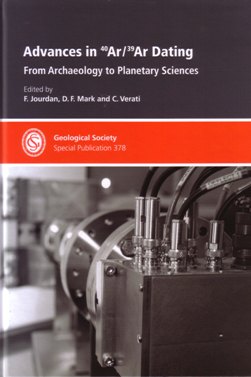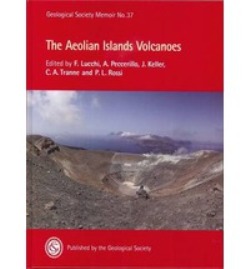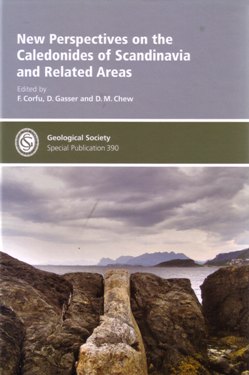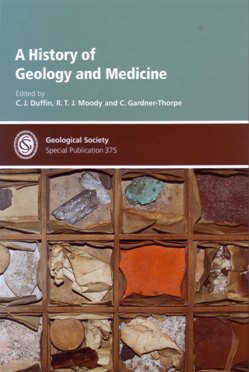 Advances in Ar/Ar Dating
Advances in Ar/Ar Dating
This Geological Society Special Publication is a long-anticipated contribution to the literature documenting recent advances in the science of 40Ar/ 39Ar dating.
The main parts of the volume are introduced with a thorough summary and review of the principles and applications of the 40Ar / 39Ar dating technique. The research paper contributions are then presented, broadly organised into two complementary thematic sections addressing advances in methodological development and in the applications of the technique.
Advances in methodological development (12 papers) cover aspects of argon diffusion, sample quality, age standards, neutron irradiation, analytical instruments and software, decay constants and other argon isotopes (such as 37Ar and 38Ar). The second part of the volume presents recent research efforts in the applications of the technique to the planetary sciences (four papers), terrestrial tectonics (four papers), detrital material provenance (one paper), volcanism (two papers) and archaeology & climate.
I have one minor criticism, acknowledged by the volume editors, is that no recent research contributions have been included for the fields of archaeology and climate (i.e. application of the technique to the Quaternary). Further reading in recent advances in these fields is indicated; but it might have been appropriate to consider amending the title of the volume to reflect this omission.
All sections of the volume are well written and edited, concisely laid out with clear and appropriate figures, photographs and data-tables - features that one has come to expect from the Geological Society Special Publication series.
In summary, the volume is a comprehensive and significant contribution to the field, and the editors are to be congratulated. I expect this will become a valuable complementary volume to the established principal reference work for the technique1. The primary readership is expected to be practising geoscience professionals and graduate students within the 40Ar / 39Ar and geochronology research communities. A recommended read and essential reference work.
Reference
- McDougall, I. & Harrison, T.M. 1999. Geochronology and Thermochronology by the 40Ar / 39Ar Method. Oxford University Press. Oxford. 282pp.
Reviewed by Mark Griffin
ADVANCES IN 40Ar / 39Ar DATING: FROM ARCHAEOLOGY TO PLANETARY SCIENCES
F. Jourdan, D.F. Mark and C. Verati (eds). Geological Society Special Publication No 378. 2014. Geological Society of London. ISBN 978-1-86239-360-8. hbk 378pp. ISSN 0305-8719. List Price: £125.00,
www.geolsoc.org.uk.
 The Aeolian Islands Volcanoes
The Aeolian Islands Volcanoes
This large format memoir provides an encyclopaedic account of these scattered islands just to the north of Sicily. Coupled with a wider series of seamounts, the Aeolian Arc curves around the southern margin of the Tyrrhenian Sea for over 200km off Sicily and Calabria. Continuing volcanism is related to extension above the Ionian slab as it sinks below the Calabrian Arc, and since the Pliocene it has migrated south-eastwards under what is now the toe of Italy. Though the oldest rocks dredged from the Sisfo seamount have been dated at 1300ka, none of the subaerial eruptions is older than 270ka.
Introductory chapters about the islands’ tectonic setting and submarine portions could have been extended, though they contain invaluable background information. While chapter two includes an innovative 3D map of Moho depth, some of the figures could have been enhanced with schematic cross-sections and better captioning. Two chapters on the submarine portions of the Aeolian volcanoes, coupled with a set of contoured bathymetric morphological maps on disk and other superb images including 3D views, are too narrowly focused to gain an idea of the nature of the seamounts forming the rest of the Arc, let alone the Marsili and Palinuro seamounts to the northwest and north of the Marsili Basin. It would be useful to know their minimum depths and sea-floor elevation in relation to the islands. However, it is clearly explained how changes in global sea-level, driven by glacial cycles, have carved distinct benches around these islands with a shelf break at around 90 to 130m.
A brief chapter explains the methodology underpinning the incredibly detailed geological mapping, reproduced on the disk (including additional data) as a wonderful series of downloadable colour pdf 1:10,000 maps, complete with numerous beautifully drafted inserts and annotations. This is followed by the detailed regional correlations across the archipelago supported by radiometric dating tied into the sea level curve. Then naturally the main chapters focus on the seven main islands and their satellites in exquisite detail, with superbly drafted figures and annotated black and white photographs coupled with geochemical plots and detailed clearly set out tables.
The penultimate chapter dwells on the ongoing activity on Stromboli and related volcanic hazards, including localised tsunamis. Finally a chapter brings together how compositional magma variations are related to their petrogenesis and geodynamic setting. Sadly, whoever drafted the truly superb graphics does not appear to be acknowledged, as this excellent volume can be thoroughly recommended for anybody with a serious interest in volcanism.
Reviewed by David Nowell
THE AEOLIAN ISLANDS VOLCANOES (Geological Society Memoir No. 37)
Edited by F. Lucchi, A. Peccerillo, J. Keller, C.A. Tranne and P.L. Rossi. Published by: Geological Society of London. Publication date: 2013 ISBN: 978-1-86239-365-3 List Price £130, GSL members £65, other societies £78 520pp with DVD. W:
www.geolsoc.org.uk
 New Perspectives on the Caledonides of Scandinavia and Related Areas
New Perspectives on the Caledonides of Scandinavia and Related Areas
The Caledonian Orogen has been the subject of intensive geological investigation for over two centuries, with these studies contributing to the development of fundamental geoscientific concepts such as regional metamorphism, the origin and emplacement of granitic magmas, nappe and thrust tectonics.
Based upon the outcomes from the European Geoscience Union General Assembly session entitled ‘Rifting, assembly and collisional processes in the Caledonides: the first step on the way to Pangea’ (Vienna, April 2012), this Geological Society Special Publication documents the advances made in the analytical techniques of structural geology, petrology, geochemistry and geochronology that have been applied to understanding the various aspects of the evolution of the Caledonides over the past three decades.
The volume is divided into seven thematic sections (comprising 29 papers) covering a diverse range of topics that summarise the current understanding (and the remaining contentious areas) and interpretation of the orogen. As the volume title suggests, the majority of the papers cover themes within the Scandanavian Caledonides, but also include contributions on key topics within the geology of the British Caledonides, Greenland, Svalbard and the East European foreland, presented as overviews.
The main thematic sections are: Introduction and Geological Overview (four papers), Provenance of Sedimentary Units along the Baltoscandian Margin (three papers), Architecture of Allochthons of Baltic Affinity (four papers), Development of the Seve Nappe Complex and its position within the Orogeny (four papers), New results on other Caledonian high-pressure rocks (four papers), Evolution of Terranes from the Iapetus Realm (nine papers), and Exhumation, Extension and Mesozoic Reactivation (one paper).
The volume provides an excellent synthesis of the current research efforts within the Caledonides, successfully combining both contributions from field studies and modern analytical techniques. All sections are well written and edited, concisely laid out with clear and appropriate figures, photographs and datatables. The inclusion of numerous colour figures and photographs is a welcome addition and should be applauded. The volume is a recommended read for all Caledonide researchers and should prove to be an essential reference source for many years to come.
Reviewed by Mark Griffin
NEW PERSPECTIVES ON THE CALEDONIDES OF SCANDINAVIA AND RELATED AREAS.
F. Corfu, D. Gasser and D.M. Chew (eds). Geological Society Special Publication No 390. 2014. Published by: Geological Society of London. ISBN 978-1-86239-377-6. Hbk. 718pp. ISSN 0305-8719. List Price: £100.00 (Fellows £50) W:
www.geolsoc.org.uk.
 A History of Geology and Medicine
A History of Geology and Medicine
Rocks, minerals and fossils have been used by man therapeutically since ancient times. The Greek physician Pedanius Dioscorides who was the imperial surgeon to Nero and the legions of the Roman army ‘published’ his five-volume magnum opus The Materia Medica around AD 64, although largely a medical herbal work his last volume contains a section called ‘Metallic Stones’. He advocated the use of rocks, limestone, pumice and serpentine; minerals, cinnabar, calcite, pyrite, realgar, asbestos and corundum (one shudders to think how these might have been administered) and fossils such as echinoid spines and oysters. This became a standard work of reference for the next 1400 years.
At the beginning of the 19th Century when the science of geology was still in its infancy, progress and scientific advancement were the preserve of men who were quite naturally from other disciplines and names such as William Buckland, who became Dean of Westmintser, Charles Lyell, a lawyer by profession and George Bellas Greenough who was involved with the legal profession, come to mind. These were the men who would further the science of geology, along with a number from the medical profession such as James Parkinson, a founder member of the Society, John Jeremiah Bigsby, who founded the Bigsby Medal awarded by the Society, Edward Jenner, and William Hunter - all of whom made significant contributions to the understanding of geology as an emerging science.
The links between geology and medicine are explored in this volume as a series of 29 papers from an international array of authors covering subjects as diverse as ‘the influence of geology in the development of public health’ and ‘the health properties of groundwater’ to ‘Dr Arthur Conan Doyle’s contribution to the popularity of pterodactyls’ and ‘the pharmaceutical use of pumice’... a truly diverse collection that makes this eclectic series of papers fascinating reading.
The papers in the publication are varied in scope and give a broad history of the interrelationship between geology and medicine. The book is well illustrated, including some in colour and the 15+ pages of references are a very useful addition to what will certainly be seen as a definitive work of reference. This is the first ever volume dedicated to this subject - an enjoyable read that can be recommended to all who have an interest in the history of geology and the history of medicine. It will certainly be recognised in future as a seminal work.
Reviewed by Richard Porter
A HISTORY OF GEOLOGY AND MEDICINE
C. J. Duffin, R.T.J. Moody, and C. Gardner-Thorpe. (Editors) 2013 Published by GSL. Special Publication 375. 512 pp Hardback ISBN: 978-1-86239-356-1 List Price: £125 Fellows: £62.50 Other Societies: £75.00 W:
www.geolsoc.org.uk